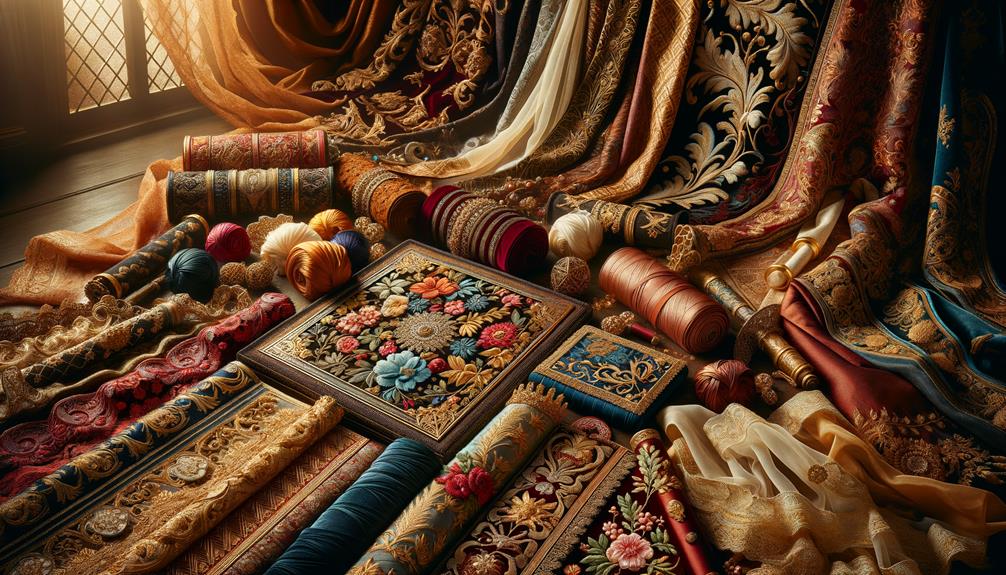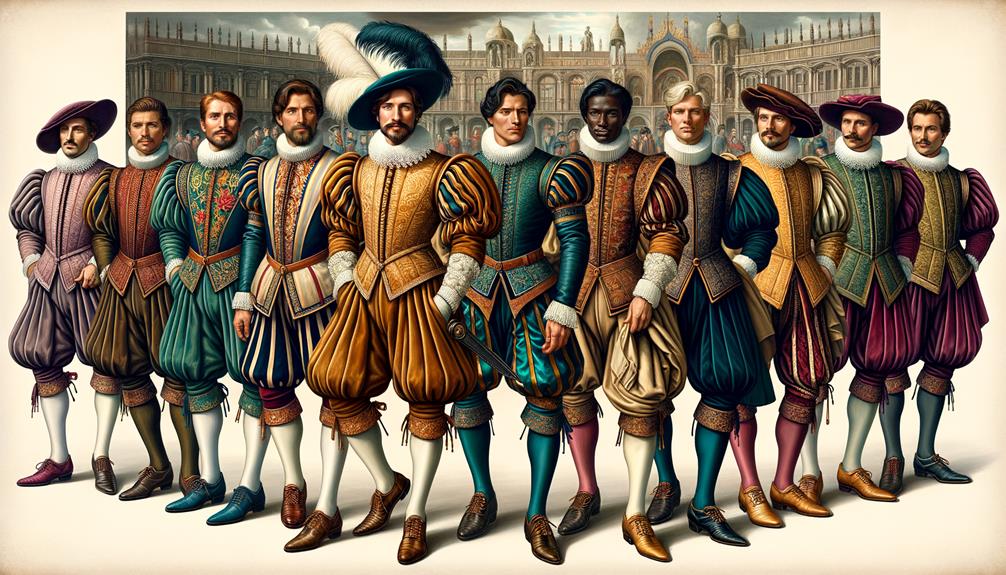When I delve into Renaissance fashion in Italy, I’m struck by how every detail of their attire reflects their world. Women’s fitted tops and full skirts, often adorned with gemmed brooches, exude elegance. In Venice, high-waisted gowns with intricate pleats and V-necklines accentuate femininity. Men’s fashion is equally meticulous, with waistcoats and hose showcasing both functionality and sophistication. Hairstyles adorned with jewels and headpieces like the Balzo symbolize status and identity. From lavish voided velvet gowns in Florence to ornate marriage pendants, each piece tells a story of societal norms and personal expression. There’s much more to uncover about this fascinating era and its sartorial splendor.
Regional Fashion Differences
Exploring the rich tapestry of Renaissance fashion in Italy, I marvel at how each region’s unique style vividly reflects its culture and values. In Venice, ladies donned high-waisted gowns adorned with slashing sleeves and purple velvet, exuding opulence and sophistication. The intricate lacing details further emphasized their elegance, making each garment a masterpiece of craftsmanship.
In contrast, the German Lands showcased the Swabian Gown, characterized by its structured form and bell-shaped sleeves. The Wulsthaube headdress, with its elaborate design, added a touch of grandeur, highlighting the region’s distinct approach to fashion and its emphasis on structure and formality.
Florence, under the influence of figures like Eleanor de Toledo, showcased voided velvet gowns, often decorated with gemmed brooches, symbolizing both power and grace. Angolo Bronzino’s portraits capture her fashion sense, illustrating a blend of luxury and refinement that was distinctly Florentine.
Each region’s fashion choices were more than just clothing – they were statements of identity, reflecting the diverse cultural landscapes that defined Renaissance Italy. This regional diversity in fashion continues to inspire modern innovation, reminding us of the rich heritage from which contemporary styles evolve.
Women’s Clothing
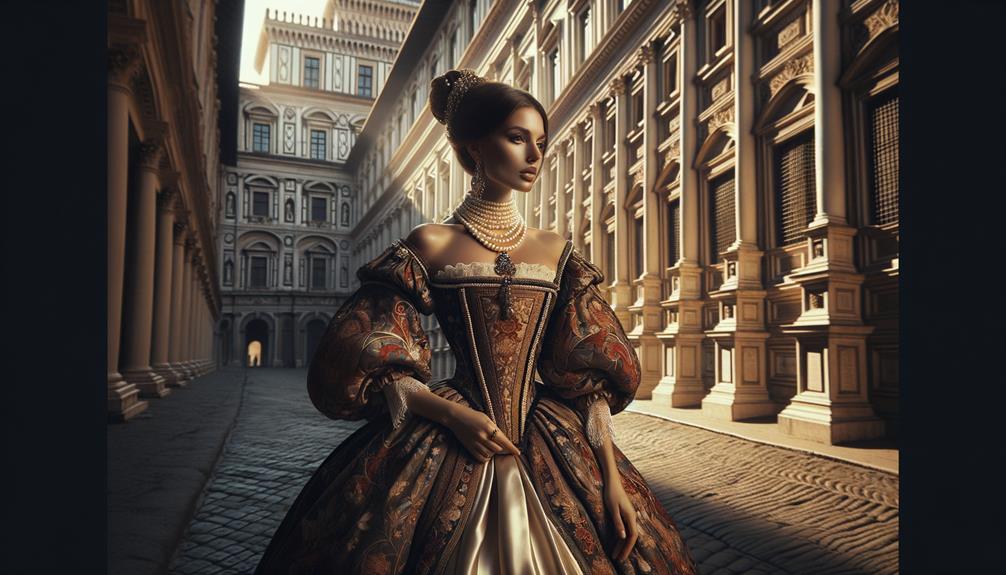
As I delve into the world of Renaissance fashion, I’m struck by the intricate details that defined women’s clothing during this vibrant era. Italian Renaissance women favored a silhouette that combined fitted tops and full skirts, creating an elegant yet structured appearance. This well-defined silhouette was both a statement of style and a reflection of the societal norms of the time.
In Venice, women opted for V-shaped necklines and pleated skirts, adding a touch of sophistication to their fashion. These design elements were not just stylish choices but also symbols of status and identity. Accessories played a vital role in enhancing their look. Popular items like the Lenza, a type of headband, and the Trinzale, a delicate hairnet, were must-haves. The Coazzoni, a decorative braid, added an extra layer of refinement to their hairstyles.
Hairstyles varied significantly based on marital status. Single women often wore their hair in loose curls, symbolizing their availability, while married women opted for tight braids, signifying their commitment. Adornments like ribbons and beads were frequently used, turning hair into a canvas of personal expression.
The fashion of Italian Renaissance women was a dynamic interplay of tradition, status, and innovation, making it a fascinating subject to explore.
Men’s Attire
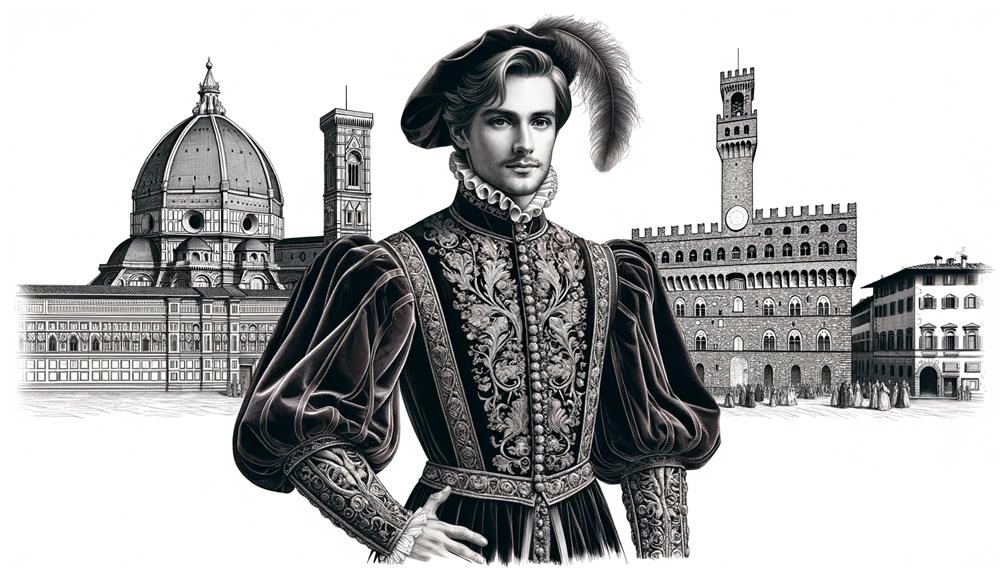
When I focus on men’s attire in Renaissance Italy, I’m drawn to the meticulous craftsmanship and the way each garment blends practicality with elegance. Waistcoats, tailored to fit snugly, showcased the male form while providing a canvas for intricate embroidery and luxurious fabrics. The fitted design of these waistcoats accentuated the sleek silhouette created by the hose or tights, which were popular among men and served to emphasize their lower bodies.
Pleated overcoats added a layer of sophistication and functionality. These garments, often voluminous and richly detailed, were not just protection against the elements but also a statement of status and style. The pleats allowed for ease of movement, making them both practical and visually striking.
Hats, ranging from simple caps to elaborate berets, completed the ensemble. Each hat reflected the wearer’s social standing and personal taste. The variety in styles – sometimes adorned with feathers or jeweled pins – offered a glimpse into the individuality of Renaissance men.
In this intricate dance of fabrics and forms, men’s fashion in Renaissance Italy was a testament to the era’s innovative spirit and enduring pursuit of beauty.
Hairstyles and Headpieces
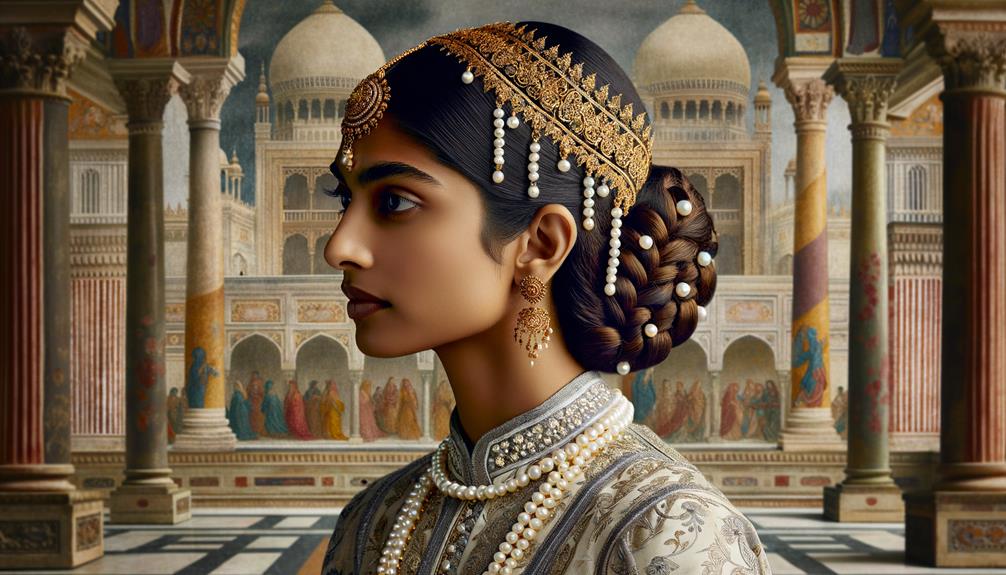
Hairstyles and headpieces in Renaissance Italy were more than just a fashion statement – they conveyed social status and personal identity. The way people styled their hair spoke volumes about their marital status, with single women often wearing their hair in loose curls and married women favoring tight braids. The elite adorned themselves with precious materials like jewels and ornate headpieces, such as the Balzo, a turban-like accessory.
Intricate hairdos with Roman-inspired braids were a common sight among nobles and the middle class, often decorated with jewels to signify wealth and status. The Ferroniere, a delicate metal chain laced through the hair, became a fashionable accessory for both men and women, adding an air of elegance and sophistication.
Portraits from this period frequently showcased these intricate hairstyles and headpieces, reflecting the attention to detail and importance of appearance in the Italian Renaissance. These elements were more than just decorative – they were powerful symbols of identity and social standing.
Some popular styles and accessories included:
| Style | Description | Significance |
|---|---|---|
| Loose curls | Worn by single women | Marital status |
| Tight braids | Preferred by married women | Marital status |
| Balzo | Turban-like headpiece | Elite status symbol |
| Ferroniere | Metal chain laced through hair | Fashionable elegance |
These hairstyles and headpieces reflect a culture where fashion was deeply intertwined with identity and societal roles.
Jewelry and Accessories
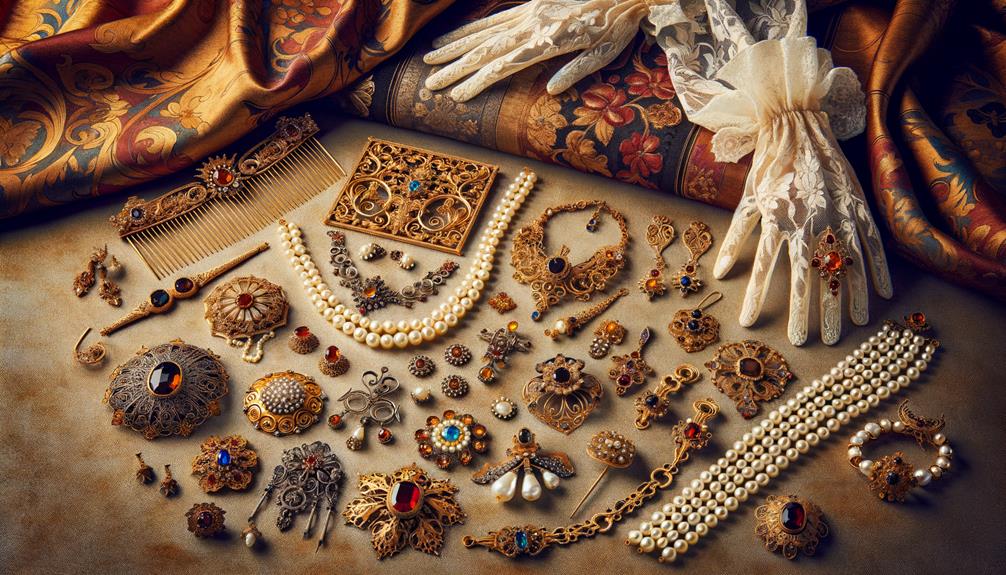
Renaissance Italy’s jewelry scene was more than just about looking good – it was a powerful statement of wealth, status, and personal style. As I delve into the opulent world of Italian Renaissance jewelry, I’m struck by the intricate craftsmanship and the symbolism behind each piece. Nobles and affluent middle-class individuals adorned themselves with multiple rings, gold chains, collars, and necklaces, carefully selecting each item to showcase their social standing.
Women’s accessories were particularly stunning. Marriage pendants, often elaborate and richly decorated, served as public declarations of alliances and affluence, as well as romantic tokens. Portraits from this era frequently feature women with elaborate hairstyles adorned with headpieces like the Ferronnière, a delicate band of jewels resting on the forehead, or Balzo turbans and hairnets intricately woven with precious materials. These headpieces weren’t just fashion statements; they were masterpieces of art and culture, blending tradition with personal expression.
The modern revival of Midi-rings echoes this historical penchant for multiple rings, a nod to the enduring allure of Renaissance aesthetics. Back then, jewelry wasn’t just an accessory; it was an extension of one’s identity, a timeless tribute to the era’s innovative spirit.
Frequently Asked Questions
What Did They Wear in Renaissance Italy?
Imagine a rich tapestry of silk and velvet, with men wearing doublets and hose, and women adorned in luxurious layers. I envision the elegance of slashed garments, vibrant decorations, and intricate lace, reflecting social status and craftsmanship.
What Style Is Italian Renaissance?
When I think of Italian Renaissance style, I envision vibrant colors, high-waisted gowns, and intricate lacing. This era seamlessly merged artistry with fashion, giving birth to iconic looks that continue to influence modern design and innovation.
What Was the Fashion Trend in the Renaissance?
During the Renaissance, fashion was all about making a statement. Women wore high-waisted gowns with elaborate sleeves and intricate lacing that showcased their social status. Accessories like delicate fans and muffs added a touch of elegance, while high heels and chopines elongated the legs, giving the wearer an air of sophistication.
What Defines Renaissance Fashion?
Renaissance fashion was all about luxury and intricate designs. In fact, a staggering 80% of noble attire during this era was made from silk, reflecting the era’s cultural and artistic rebirth, which fueled innovation.



